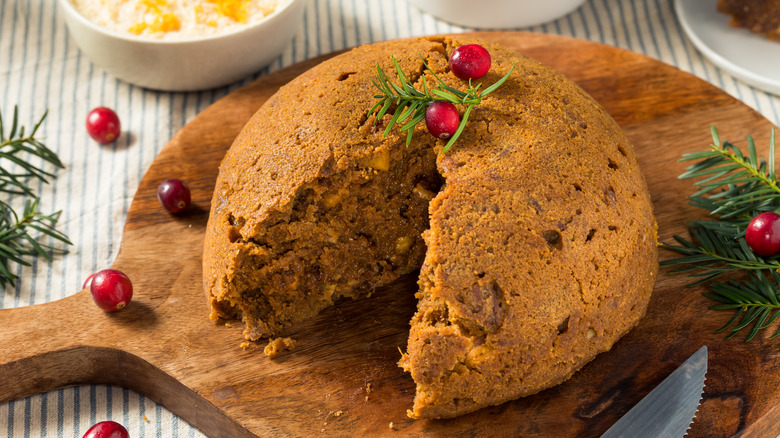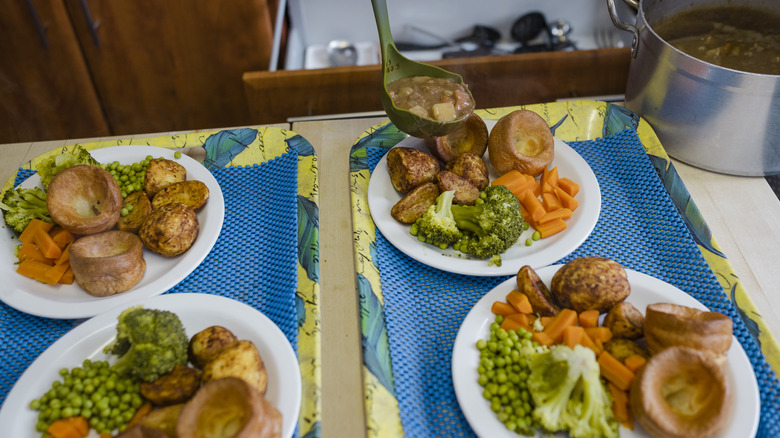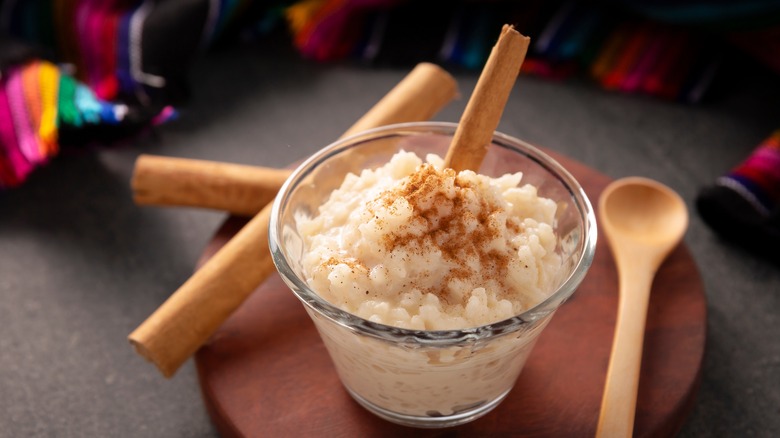The Difference Between American And British Pudding
Though we all technically speak the same language, a lot changes when you go from the U.S. to Great Britain. What Americans call a french fry becomes a chip in England; what we in the U.S. call a chip is a crisp in the U.K., and if you see aubergine on a menu in England, it's what we in the States would call an eggplant.
Most of these linguistic differences are fairly straightforward, but one swap that's tough for the armchair linguist, the foodie, or even Brits and Americans themselves to explain is the difference between what Americans and Brits call pudding. In the U.S., when we say pudding, we're referring to something sweet and custard-based or jelly-like in texture. Think the classic chocolate pudding, rice pudding, or even tapioca — all are sweets with a jiggly, creamy consistency.
Across the pond, ordering pudding won't get you a spoonable custardy treat. For Brits, pudding can refer to a range of dishes and courses from a savory bread-y, eggy Yorkshire pudding, a meat-based blood pudding served for breakfast, or a sweet after-dinner steamed dish like spotted dick or sticky toffee pudding. Think baked cakes with varying sweetness levels. Pudding, in other words, can refer to a whole host of differently prepared and enjoyed dishes in the UK, and what we call pudding in the U.S. might be called custard overseas. To fully understand the difference requires a bit of a history lesson.
Early British pudding can be traced to medieval times
The origins of pudding can help explain the linguistic differences today. Food historians have traced the original puddings back to savory roots, as they first appeared in medieval times, long before the modern United States of America as we know it existed. Earliest renditions of British puddings were meat-based, often boiled in specialized pudding bags — similar to how a sausage might be made. In fact, it's suspected the word can be traced to the Latin word for sausage.
As with all North American cuisine, pudding in the U.S. has Indigenous roots. Early European settlers learned from Indigenous cooks how to work with native foods, and made recipes such as sweet potato or corn pudding. Pudding, as modern Americans think of them, came into popularity as the old-school steamed or boiled puddings from the old world eventually morphed into the more custard-like puddings seen in America today. This iteration became more popular around the middle of the 19th century, as modern cooking methods like using cornstarch to thicken became more available and known.
Pudding can be sweet or savory, a course or a dish
Further complicating the linguistic difference between American and British "pudding" is the fact that in the U.K., pudding may refer not to a dish or recipe at all, but to a course. Much like Americans would call what follows the main course dessert, the pudding course is a term for a sweet after-dinner treat. What gets served during this pudding course may or may often not be a pudding recipe at all — it could even be ice cream or pie.
If there are similarities to be found among the wide range of dishes called pudding in the U.K., whether sweet or savory, baked or steamed, fruit or meat-based, it's this: almost all are cooked in some way using hot water, be it steaming or boiling, and have that hallmark gel-like goopy consistency. Others have pointed out that no matter what type of pudding one refers to, the category has a reputation for encompassing homely, rustic, and simple foods.
One similarity among the many differences is that in both the U.K and U.S., pudding can be sweet — and in the case of American pudding, it always is. It's something to enjoy after a meal, be it a Christmas pudding in Britain during the holidays or a simple chocolate or banana pudding topped with whipped cream on a summer night in the States. Complex linguistic definitions aside, are you craving pudding yet?


